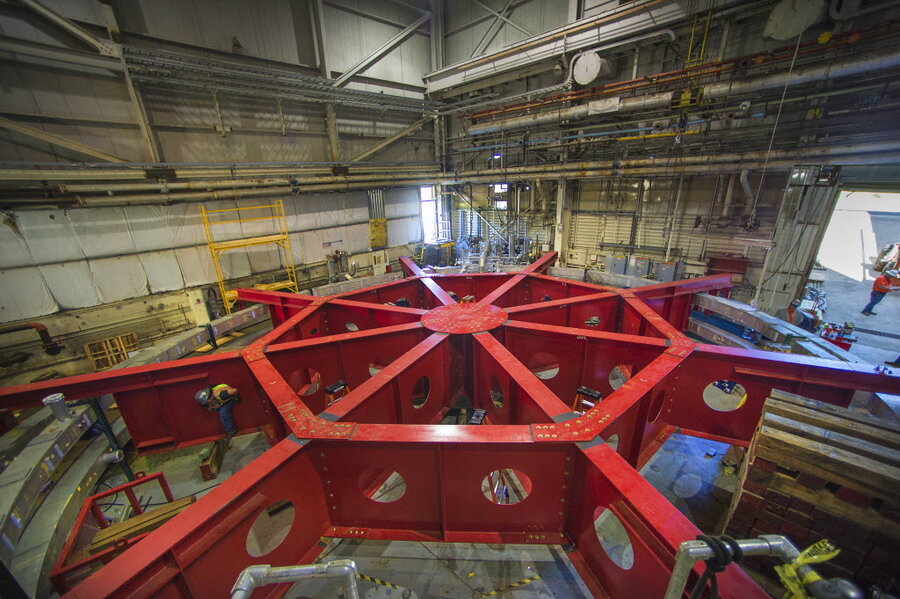How to move giant magnet from New York to Chicago
Loading...
Compared to ants, we humans have a ways to go in the science of moving large objects.
But we're getting better at it. We've shown we can safely cart 165,000-pound space shuttles from hangars to launch sites to an L.A. museum. We're pretty good at hoisting steel girders to the top of skyscrapers and grand pianos into second-story apartments.
The latest test: a 15-ton magnet.
Long Island scientists will on Saturday begin to move a 50-foot-wide, 15-ton electromagnet about 3,200 miles to Chicago, in what is expected to be a more than month-long trip, according to Brookhaven National Laboratory, the magnet's original home in Long Island, where it was built in the 1990s.
The magnet is being transported to Illinois’s US Department of Energy's Fermi National Accelerator Laboratory, where scientists from 26 institutions worldwide will use it for a new experiment called Muon g-2 that will study muons, subatomic particles that exist for just 2.2 millionths of a second.
"The transport of the ring from Brookhaven to Fermilab is a great example of the cooperation that exists between national laboratories," said James Siegrist, associate director of science for high-energy physics with the U.S. Department of Energy, in a press release. "The Muon g-2 experiment is an important component of the future of particle physics in the United States."
Moving a 15-ton anything is no easy task, and moving a 15-ton magnet is more difficult still, as the magnet can’t be taken apart or twisted more than 1/8th of an inch without ruining the superconducting coils inside and making the magnet – and the long, expensive move – useless. That means the super magnet must be slowly rolled across the eastern United States, aboard a truck and barge specially designed for the job.
The move is expected to cost some $3 million – a sum substantially less than the $30 million it would cost to build a new electromagnet.
"It costs about 10 times less to move the magnet from Brookhaven to Illinois than it would to build a new one," said Lee Roberts of Boston University, spokesperson for the Muon g-2 experiment, in a press release. "So that's what we're going to do. It's an enormous effort from all sides, but it will be worth it."
The truck, which looks something like a U.F.O. painted Ferrari red, will be guarded with rolling barricades as it chugs across land and will travel mostly at night at no more than 10 miles an hour.
No word yet on whether or not the truck will be repurposed as a transportation option for members of the slow-travel, slow-food movement.








